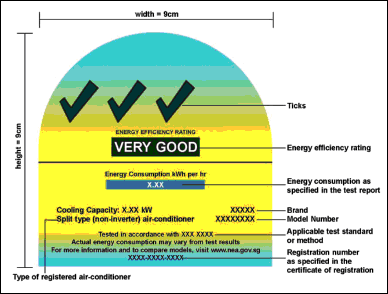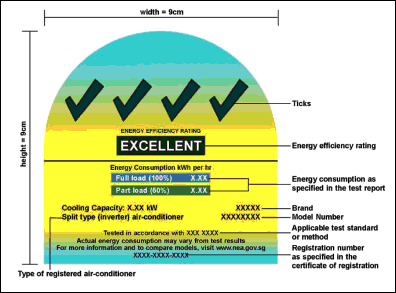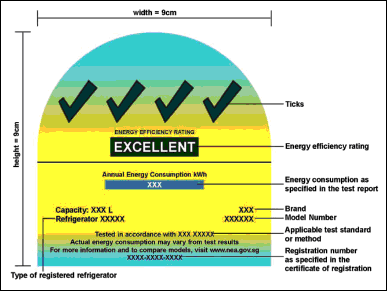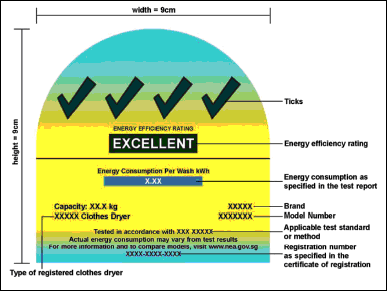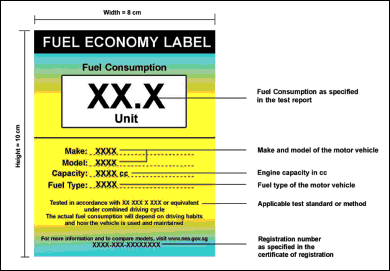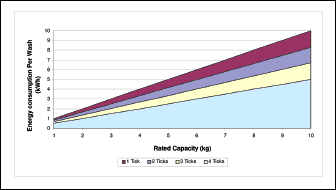No. S 92
| Environmental Protection and Management Act |
(Chapter 94A)
| Environmental Protection and Management (Energy Conservation) (Amendment) Regulations 2009 |
|
| Citation and commencement |
| 1. These Regulations may be cited as the Environmental Protection and Management (Energy Conservation) (Amendment) Regulations 2009 and shall come into operation on 1st April 2009. |
| Amendment of regulation 2 |
2. Regulation 2 of the Environmental Protection and Management (Energy Conservation) Regulations (Rg 10) (referred to in these Regulations as the principal Regulations) is amended —
|
| Amendment of regulation 3 |
| 3. Regulation 3(4) of the principal Regulations is amended by inserting, immediately after the words “registrable goods” in sub-paragraph (a), the words “(except a motor vehicle with no production model and without type-approval)”. |
| Amendment of regulation 5 |
| 4. Regulation 5(1) of the principal Regulations is amended by inserting, immediately after the words “in any way”, the words “by the manufacturer of those registered goods”. |
| Amendment of regulation 7 |
| 5. Regulation 7(1) of the principal Regulations is amended by inserting, immediately after the words “registrable goods”, the words “(except a motor vehicle with no production model and without type-approval)”. |
| Amendment of First Schedule |
6. The First Schedule to the principal Regulations is amended —
|
| Deletion and substitution of Second Schedule |
7. The Second Schedule to the principal Regulations is deleted and the following Schedule substituted therefor:
|
Made this 26th day of February 2009.
Chairman, National Environment Agency, Singapore. |
| [NEA/LD/38/4/Vol. 1; AG/LEG/SL/94A/2003/1 Vol. 2] |
| (To be presented to Parliament under section 77(3) of the Environmental Protection and Management Act). |

